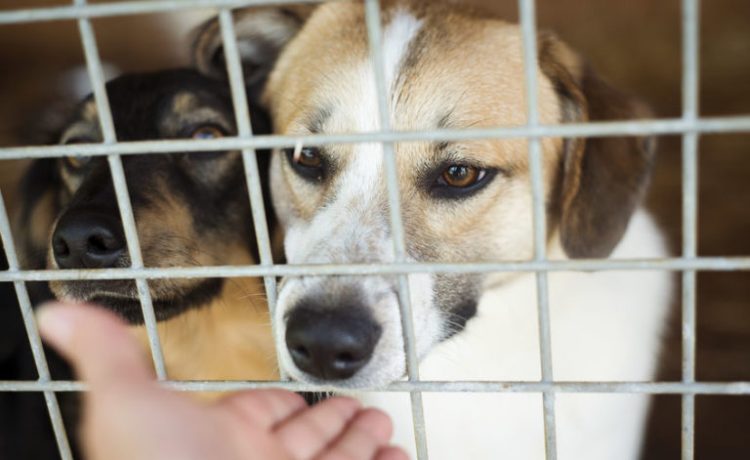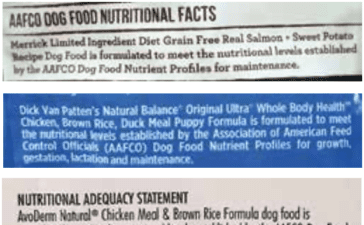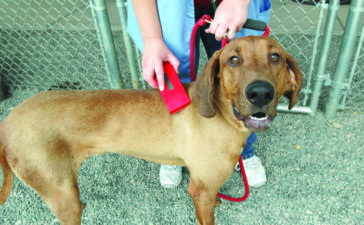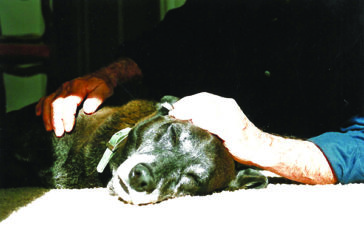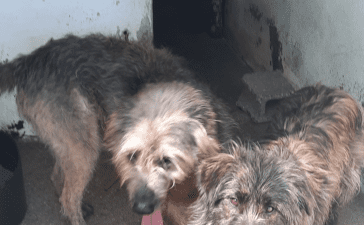There are a lot of terms to keep track of, when it comes to pet adoption. There are fees and routines, and questions to ask about whether or not a certain dog is a good fit for you. But perhaps one of the most important ― and most confusing ― questions concerns the different types of rescue. Because a pound and a shelter are the same thing, right? A rescue is yet another word for the same kind of facility? Not entirely true.
There are some main differences to keep in mind, when it comes to telling these terms apart. Short version: one is run by volunteers, one is privately owned, and one is council-owned. If you’d like a little more in-depth information, though, we’ve got that, too.
The privately owned shelter
A shelter is a privately owned charity, and can be huge or small. They often have proper marketing teams, hosting events like fashion shows, telethons, and entire events for adoptions alone. The Humane Society is a well-known example of a shelter, with branches all over the country. Each community also tends to have multiple shelters. Sometimes, a shelter will take in stray animals, on behalf of local councils. Overall, though, they’re privately owned charities run by animal welfare organizations like the RSPCA, or the Animal Welfare League. Their facilities can be very large, with over 200 kennels. Others may only have 10. These shelters sometimes accept surrenders from the public, but due to limited space, they often have wait lists.
There are a few pros and cons with a shelter, some of them bigger or smaller than others. On the one hand, animals at a shelter have been thoroughly assessed concerning temperament and health, before being put up for adoption. On the other, this kind of organization may not follow up on an adoption very well, due to being too busy.
A shelter is generally a good place to find a pet, since they thoroughly assess the health and temperament of the pet before rehoming. This is to ensure that they’re a good fit for their new family. Looking for a pet also includes meeting more than one of them, most of the time. This is to increase the chances of finding just the right match for you, and to get to know the dogs available for adoption. Oftentimes, this is done on one occasion, at a convenient location. It’s important to call ahead and make sure the shelter is able to have you come visit.
No-kill and kill shelters
Another term often heard in the context of shelters is no-kill shelter, as well its opposite, kill shelter. The difference between the two comes down to whether or not a shelter is able to house an animal for long periods of time. So-called kill shelters have a grace period during which they keep the animal, or until they run out of space. Once this period is over, the animal is humanely euthanized. In some cases, sickly animals are euthanized immediately.
There is a lot of debate around these different types of shelters. Some argue that kill shelters shouldn’t exist, while others argue than no-kill shelters tend to only take in easily adoptable animals. Any old, sick, or in some way difficult animals therefore have to end up somewhere else. Since more time, resources, and money is required to care for sick or “difficult” dogs, this becomes unsustainable, over time. Therefore, a kill shelter is by some considered an admittedly sad, horrible necessity.
The council-owned pound
Animals who end up in pounds have been seized, or found wandering around the community. The animal is then held for several days, until the owner steps forward to claim it. If no one does, the animal may be taken on by a rescue, where it’s fostered and cared for until it can be rehomed. If this isn’t possible, the animal will sadly be euthanized. In some cases, the animal is surrendered by the public, but the same rules apply.
You can adopt from a pound, which means saving an animal from being euthanized. But there’s no screening process for the dogs they bring in or adopt into new homes, so you never know what you’ll get. The process itself tends to be pretty straightforward.
The volunteer-run rescue
A rescue is usually run by volunteers, and they accept overflow from shelters and pounds. They may sometimes also take on dogs surrendered by their owners. Sometimes, the volunteers will foster a dog in their own home, which is good for prospective adopters. It allows them to ask directly about the dog’s temperament, behavior, disposition, and health ― details the volunteer will know very well, by then. Whether or not the volunteers foster dogs themselves depends largely on the size of the organization.
Just like pets themselves, rescue organizations come in all kinds of shapes and sizes. A group that calls themselves “breed rescue” or “foster care” groups, for instance, are generally speaking a collaboration between volunteers. Their common goal is to provide a safety net for rescue pets, and some of them have kennels. This is especially the case for foster care groups. But often, as stated, the volunteers will take the dogs into their own homes.
Meanwhile, breed rescue groups specialize in particular breeds. They’re usually part of a pure-breed club. Like with most rescue organizations, however, they are volunteers, so they may not always be available to take your calls or emails. Making an appointment is key, if you’re interested in meeting or adopting a pet. The time has to suit both you and the foster home, so try to be flexible.
A big benefit of a rescue organization is that the dogs get to stay in a home environment, while looking for a forever home. This is calmer and more personal than living in a kennel, and may provide a sense of safety for a dog that needs it. The downside, however, is that rescues are sometimes low in manpower. This can lead to the ones involved being too busy to respond to things on time, or in a comprehensive way. Please keep in mind that they do the best with what they have.
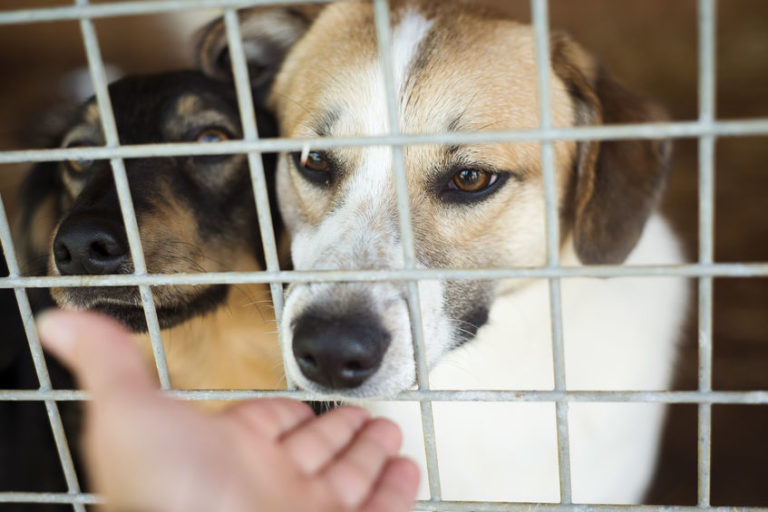
Choosing an organization
Depending on what kind of dog you want, as well as what lifestyle you have, different options might work for you. If you want to know exactly what kind of dog you’ll be getting, a rescue or shelter is the way to go, since they carefully assess their dogs. If it’s not as important to you, however, the pound always welcomes potential adopters. There are plenty of dogs who’d be happy to come home with you, no matter what.
Things to keep in mind
When it comes to a pet adoption― whether it’s from a pound, shelter, or rescue organization ― there are a few things to keep in mind. An organization, whether big or small, needs to feel reliable and legitimate. This can be hard to determine, but there are a few good things to keep in mind when looking.
First off, impressions are everything. This is especially true when it comes to the welcome; responsiveness, a friendly atmosphere, respect. Many organizations are run by volunteers, which means they can’t always be available to you and your questions. But they’ll do their best to get back to you and tell you what you need, always. They take their cause very seriously. This is definitely an important component to think about when looking to adopt.
Another important factor is a willingness to answer questions. They should want to get to know you a bit, in order to be able to match you with the right dog for you. Your lifestyle and personality are a huge part of whether or not a certain pet will fit into your everyday life ― and whether or not you will fit into theirs. A rescue should be ready to offer help and advice in general, both before, during, and after the adoption.
An organization that facilitates adoption needs to be committed to the animals in their care, and their wellbeing. Make sure to thoroughly go over the adoption contract, and double-check that it includes a clause where you can return the pet if things don’t work out. Sometimes, you don’t know if a pet is a good match, until you’ve lived with them for a little while. If that’s the case, it’s comforting to know ― both for you and for the pet ― that they’ll have somewhere to go if they need it.
Spaying and neutering
A standard part of rescuing and rehoming pets is neutering. A huge problem when it comes to homeless pets is that they simply reproduce too much, and too quickly. A homeless dog may be born homeless, and then birth even more homeless pups, and so on. Others may be from a regular home, where irresponsibility is what causes unwanted litters ― which in turn may end up in shelters and pounds, as they grow up. People tend to like the idea of puppies, imagining that they’ll either keep them or sell them. But the truth is, puppies are a lot of work, and selling them may not be as easy as one thinks. And even then, it’s important to know exactly who you’re selling to. These things are aspects that most won’t have time, motivation, or money to deal with. Unless you’re an actual breeder, of course.
In other words, to neuter and spay your dog is important. So make sure the rescue from which you plan to adopt also neuter and spay their dogs. If the dog isn’t old enough for such a thing, then arrangements should be made for the shelter to provide such a procedure when the time comes. In some very rare cases, there are medical reasons for the dog not to be neutered, but then a veterinary should provide this information.
Want to adopt?
In the end, it doesn’t really matter from which kind of organization you choose to adopt your pet. You never know when or where you’ll find your perfect match, and a lot of it is about simply going with your gut. Making sure you have all the right information might help, though. Thanks to plenty of helpful resources online, you can find anything you might need to choose the right path for you.

